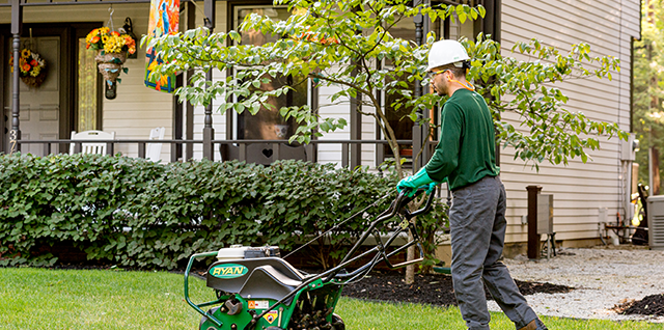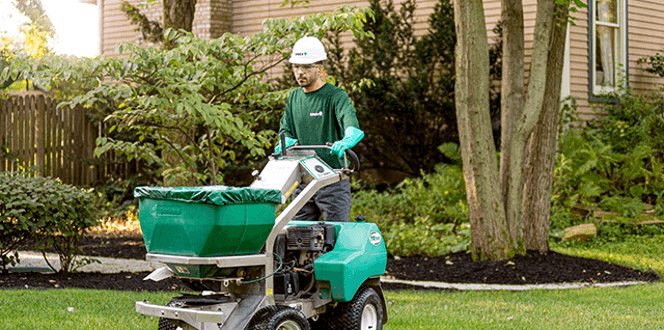Have you ever laid out grass seed expecting a new and improved lush green lawn and... nothing happens?
Prepping your lawn before you overseed not only helps make sure the seeds actually sprout, it can also make a world of difference in the health and appearance of your grass. One blog reader, Andrew, wanted to get a handle on how to properly prep his lawn for reseeding. He asked: “In addition to aeration, should compost be applied to existing turf just before adding seed?”
Andrew has the right idea—things like aeration and soil enhancements help grass get off to a good start. But what else do you need to prepare your lawn for reseeding? Keep reading for a step-by-step guide.
I Want to Overseed (Re-Seed) my Lawn. Where Do I Start?
Wait until it’s the right time to overseed in your area. In northern regions, shoot for early fall. And in southern regions, overseed in spring, especially if you are seeding with bermudagrass.
Prepare Your Lawn For Reseeding
- Be sure to pick grass seed that matches the grass type in your lawn. Or, if your lawn hasn’t been performing well, switch to a grass seed that’s best suited for the climate in your area. Not sure what’s best? This blog post breaks down the most common grass types based on where you live.
- Test the soil to find out if it’s missing any key nutrients, or if the pH is off balance. Grass needs a good foundation to grow its best, and with a soil test you can tell exactly what nutrients your lawn soil needs to be the best environment for new seeds. Learn how to do a soil test with this blog post, and then take any recommended steps to improve your soil.
- Mow the lawn prior to overseeding.
- Water the lawn to moisten the soil, but make sure it’s not soaking wet. A good rule of thumb is to water the day before you plan to overseed so the soil has a little time to dry.
- When the soil is moist, go over the grass a few times with a core aerator (you can rent these at most garden stores) or a manual lawn aerator. This leaves tiny holes in the soil for the seeds to be worked into.
- Bouncing back to Andrew’s question above, if you choose to add compost before overseeding, apply no more than a fourth of an inch after aeration. But don’t sweat it if you don’t have compost—this step is optional.
Can I Overseed Without Aerating First?
Aeration is a super important step in the process—don't skip it!
Lawn soil that’s been sitting awhile can firm up quite a bit. Also, each time you mow, a layer of dead grass—called thatch—builds up between the soil and live grass blades. So overseeding a lawn as-is means you’ll be dropping seeds overtop dead grass and packed soil. Nine times out of ten, those seeds won’t sprout. That’s where aeration comes in handy—it loosens up the soil, removes thatch and helps air and water flow in so seeds have the perfect growing environment.
If you can’t get your hands on an aerator, the next best option is to rake your lawn with a metal rake to remove mild thatch and loosen soil. For heavy thatch (say, more than a half-inch or so) use a dethatcher.
The Best Way to Overseed a Lawn
After you’ve prepped your lawn, apply the grass seed with a drop or broadcast spreader. Then, add a starter fertilizer and lightly rake the seed and fertilizer into the soil. Finish up with a gentle soak of water, being careful not to wash away the seeds.





